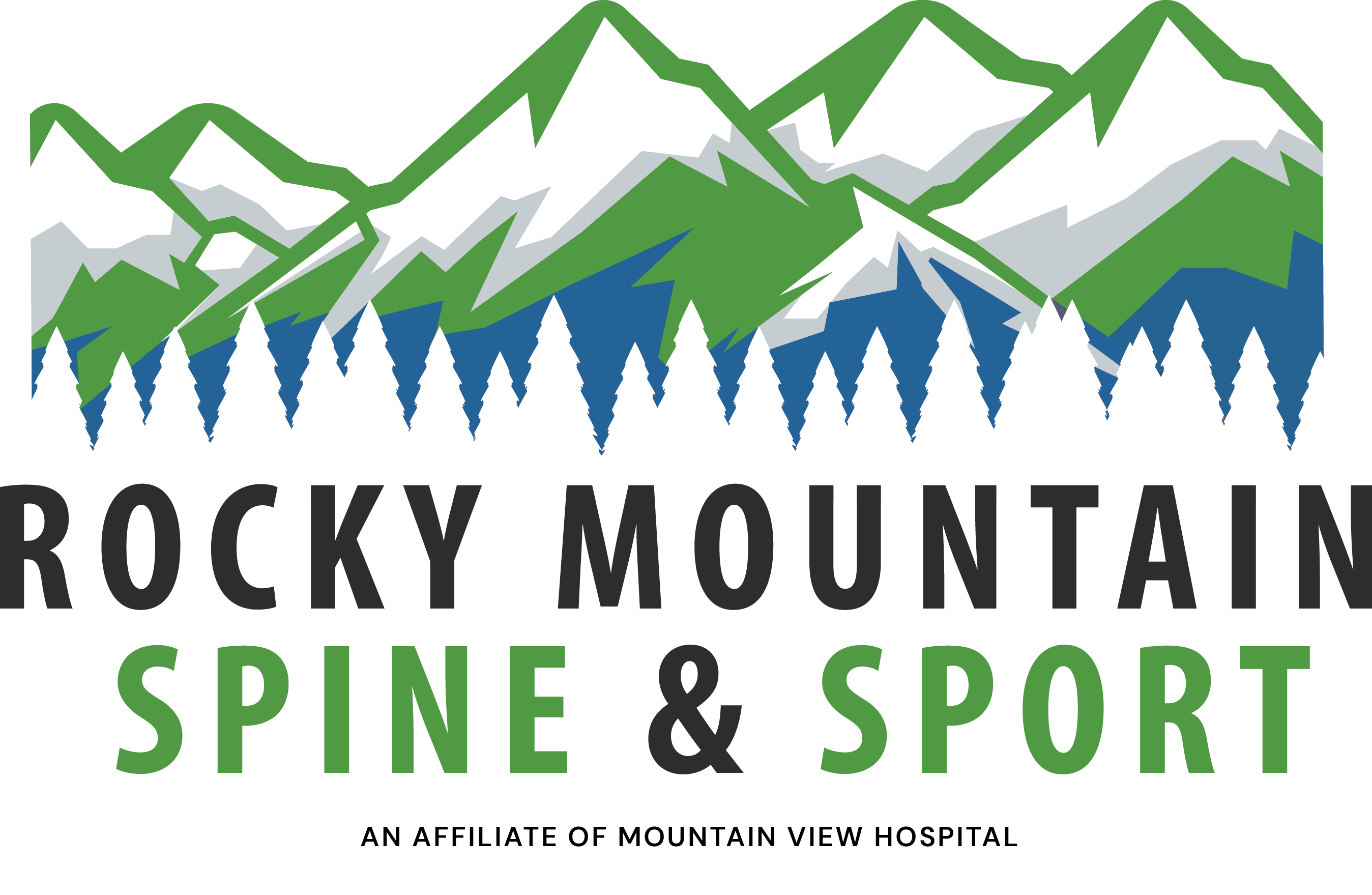Some people are born with spinal conditions such as scoliosis or lordosis that lead to mobility issues and cause pain.
Back and Spine Pain
The back and spine are vital parts of the body, helping with support, function, and movement. When a person experiences pain in their back or spine, it can affect movement and hinder day-to-day activities.
At Rocky Mountain Spine and Sport, we provide treatment for the back and spine, helping to reduce/eliminate pain and increase mobility.
Connection and Functionality
The spine is made up of bones, discs, and ligaments. It supports other parts of the body, including the upper back, lower back, and neck, and enables various important functions, such as twisting, bending, and standing.
The spine also protects the nerves related to motor and sensory control and is made up of three segments:
The cervical region: This refers to the neck and includes 7 vertebrae.
The thoracic region: Also known as the upper back, this is made up of 12 vertebrae.
The lumbar region: This is the lower back and consists of 5 vertebrae
Causes of Back and Spine Pain
Back and spine pain can stem from issues that are related to the spine itself, such as vertebrae, discs, and facet joints; surrounding structures, such as nerves, muscles, and ligaments; or other physical/situational factors.
Spine pain is commonly caused by:
Changes can occur with age due to discs losing elasticity and hydration, sometimes resulting in conditions such as herniated discs or osteoarthritis.
In some cases, bacteria or viruses can lead to an infection of the bones in a person’s spine.
Sport injuries, falls, and accidents can lead to fractures and acute or chronic spine pain.
Spine damage can increase sensitivity and cause pain, muscle weakness, numbness, and limited functionality.
When a person is overweight, it can add stress to the spine and result in chronic pain.
Even normal activities can slowly wear on the body over time, causing the breakdown of endplates.
Back and Spine Pain Treatment Options
Acupuncture
This involves the insertion of fine needles into various parts of the body and can be used as part of treatment or as the sole treatment method, depending on the condition.
Epidural Steroid Injection
This refers to the injection of steroids into the spinal area. It can relieve pressure on inflamed spinal nerves.
Facet Injections
Pain-relieving medication is administered into the facet joints. Facet injections can help to relieve pain caused by inflammation.
Medial Branch Block
A medial branch block can serve as a method for pain relief and as a test that can help identify the source of the pain. In this form of treatment, medication is injected next to nerves that are causing pain instead of directly into affected areas.
Perineural Injection
This type of treatment includes a series of injections directly under the skin that target painful areas with sensitive nerves.
Physical Therapy
Physical therapy customizes care to address specific concerns, as back and spine pain can be different for everyone.
Radiofrequency Ablation
Radiofrequency energy is used to heat and destroy nerves that send pain signals (see Intracept® information below).
Regenerative Injections
These procedures can provide an alternative treatment for patients who are considering elective surgery.
Sacroiliac Joint (SIJ) Injection
This form of injection diagnoses and treats the source of lower back pain.
Surgical options
In serious cases, surgery such as a vertebroplasty, discectomy, or spinal decompression may be necessary
*This list is not all-inclusive.
The Intracept® Procedure
Some people experience vertebrogenic pain, which is a specific type of chronic pain in the lower back. It results from endplates that have been damaged by the basivertebral nerve (BVN) due to disc degeneration or everyday stress on the body. When this damage occurs, inflamed endplates carry pain signals to the brain.
The Intracept® procedure uses radiofrequency ablation to stop these signals from being sent. It involves using a radiofrequency probe to heat the BVN, ultimately leading to pain relief.
The procedure is safe and minimally invasive, and patients typically undergo anesthesia for around an hour. It is FDA-cleared and has proven results of long-term improvements in pain and function for the majority of patients.
The procedure consists of four steps:
Local Back and Spine Treatment
Back and spine pain can interrupt everyday life, and we want to help you find relief. Our team can help you identify the best course of treatment to help address your concerns. We conduct evaluations that can help you determine next steps, and we are happy to answer any questions you may have.
Reach out today to schedule an appointment or to learn more about our treatment options for back and spine pain.






